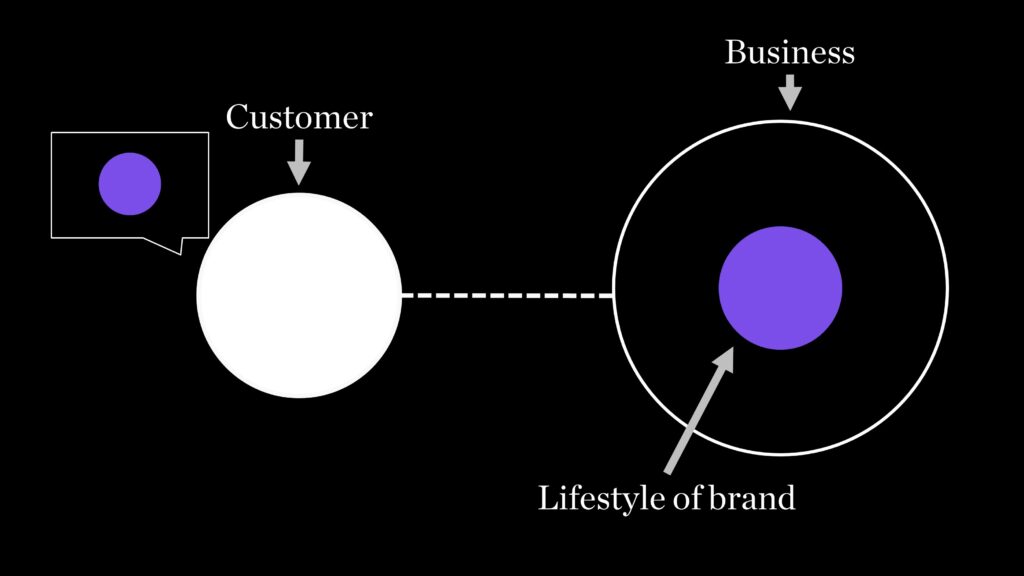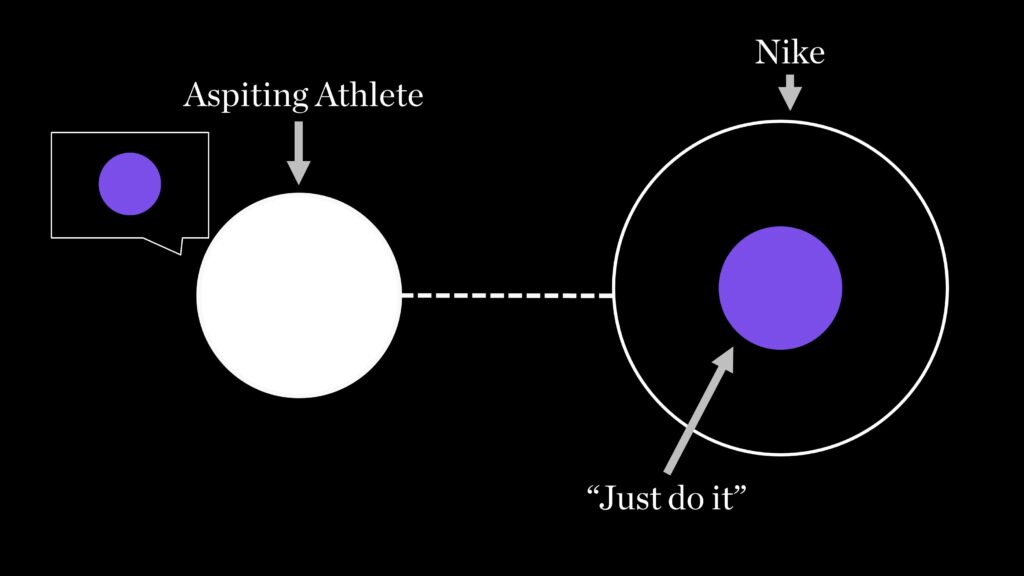Article last updated on January 18, 2023
Are you looking for ways to create an image for your brand that will resonate with customers and make it stand out from the competition? If so, establishing a lifestyle brand could be the answer!
By understanding how to create an effective lifestyle branding strategy, you can showcase the values, beliefs, and stories behind your brand in order to appeal directly to your target audience’s wants and needs.
After all, when it comes down to it, it’s all about connecting with people on an emotional level!

In this article, we will take an in-depth look at what makes up a successful lifestyle branding strategy – from building powerful visuals that evoke emotion; creating compelling digital campaigns; crafting engaging content; leveraging influencers; and utilizing social media channels effectively – we’ll discuss all aspects involved in establishing a positive brand image among your target consumers.
We will look into your options for making more people aware of your lifestyle brand on different digital platforms, so you can reach the right customers at the right time and make those all-important connections.
What is Lifestyle Branding
Lifestyle branding is a strategic approach to marketing that focuses on creating an image of your brand that resonates with customers and stands out from the competition.
It means using visuals, content, campaigns, influencers, and social media to create a brand identity that speaks directly to the wants and needs of your target audience.
At its core, lifestyle branding is about connecting with people on an emotional level by showcasing the values, beliefs, and stories behind your brand.
It’s about creating an aspirational lifestyle that customers can identify with – one that they can aspire to be part of.
Analyzing successful brands that have adopted lifestyle branding

It’s important to analyze successful lifestyle brands to get an understanding of what works and what doesn’t when it comes to creating a powerful image for your brand.
Take Apple, for example. Their branding strategy is centered around the ideas of simplicity, innovation, and creativity – all values that their customers can identify with. They have also created a powerful visual identity with their iconic logo and sleek product designs.
On the other hand, Nike has built a lifestyle brand based on the concepts of self-empowerment and athletic achievement. Their campaigns feature inspiring stories of athletes pushing themselves to achieve greatness – something that resonates with their target audience.
Understanding the benefits of a lifestyle branding strategy
The benefits of a lifestyle branding strategy are numerous. It allows you to create an image for your brand that is unique, memorable, and resonates with customers.
It also helps you stand out from the competition by creating a lifestyle that customers can relate to and want to be a part of.
A successful lifestyle branding strategy will help to build trust and loyalty among customers, as well as increase brand awareness and visibility in the marketplace. It can also help you establish yourself as an authority in your industry, giving you a competitive edge over other brands. Finally, it can lead to increased sales and profits.
After knowing the basics of lifestyle branding, let’s move on to the tips for creating your brand idea.
Creating Your Lifestyle Brand Idea

Creating a successful lifestyle brand requires you to have a clear idea of who your target audience is and what they want.
To create an identity that speaks to them, you need to know what they value, what they believe, and what they want to achieve.
Start by researching your target market and understanding their needs, wants, and desires. What do they value? What do they aspire to achieve? What kind of lifestyle do they want to live? Once you have a good understanding of your audience, you can start crafting an image for your brand that speaks directly to them.
Think about the values that define your brand and the stories that you want to tell. How can you use visuals, content, campaigns, and social media channels to bring your brand idea to life?
Brainstorming around potential lifestyle brands
Maybe it will be easier if you brainstorm around potential lifestyle brands.
Think about the different lifestyles that your target audience might be interested in and how you can create a brand idea that speaks to them.
For example, if you’re targeting young professionals, you could create a brand idea based on success, ambition, and work-life balance. Or if you’re targeting outdoor enthusiasts, you could focus on adventure and exploration.
Once you have a clear idea of what your lifestyle brand should look like, it’s time to start creating content and campaigns that will bring it to life.
Understanding your target audience’s needs and wants

Understanding your target audience’s needs and wants is essential to creating a successful lifestyle branding strategy. Before you can create an identity that resonates with them, you need to have a clear understanding of who they are and what they want.
Without this knowledge, your efforts to create a lifestyle brand will be futile.
Identifying what distinguishes you from competitors

The most important part of making a lifestyle branding strategy that works is figuring out what makes your brand different from others.
That’s why internal and external self awareness are so important.
You need to be able to set yourself apart from the competition and build a brand that speaks to your ideal customers.
Think about what makes your brand unique and how you can use this to create an aspirational lifestyle that customers can identify with and aspire to be part of.
Crafting Your Unique Story

At its heart, lifestyle branding is all about creating an experience. It’s not just about selling products or services—it’s about offering something bigger than that by connecting with the average person on a personal level and turning them into part of a larger community of people connected through shared values, interests, or experiences.
To craft this story effectively, it must be relatable, inspiring, and compelling enough for potential customers to want to join you on this journey.
Symbols are powerful tools when used correctly because they can capture complex ideas in one simple image or phrase, allowing us to communicate our message quickly but also deeply without having to explain ourselves over and over again.
Using symbolism as part of your lifestyle branding allows you to establish an immediate connection with your audience while providing them with visual cues that help reinforce the messages behind each element and ultimately make it easier for individuals to identify with what your company represents, meaning they will be much more likely to become loyal customers too.
Crafting the story of your brand to reflect its core values and evoke emotions in customers

It’s important to create a narrative that resonates with them and helps build an emotional connection. To do so, you need to understand what makes your brand unique and how it can be communicated through creative visuals, catchy copy, and engaging content.
For instance, if you are a sneaker company selling lifestyle products, think about teaming up with athletes whose personalities embody your brand’s vision; having someone famous wear or talk about your product will give it credibility and help people relate to it more easily.
You may also consider creating a life vision – perhaps one focused on self-expression or personal growth – that reflects the values associated with your lifestyle product.
This vision should then be incorporated into everything you produce: social media posts, video campaigns, and digital ads should all communicate this same message in order to ensure clear consistency throughout all marketing efforts.
With well-thought-out stories and smart use of social media, businesses can build a powerful lifestyle brand and strengthen their relationships with customers.
Knowing how to best capture attention in today’s market necessitates keeping up with industry trends and understanding consumer needs, but investing time in researching effective tactics will pay off in the long run!
Harnessing Social Media for Lifestyle Branding Success
Lifestyle branding is more than just posting pictures on Instagram or making interesting content. It also means getting involved in the lifestyle cultures that your product or service is linked to.
By using social media sites like Twitter, Facebook, YouTube, and TikTok, you can show how your products fit with certain lifestyles that consumers like.
Also, the focus of merchandising should be on putting together collections that reflect lifestyles that people want to have but don’t have yet.
This approach allows brands to connect with their target market through powerful visuals and authentic storytelling.
Through thoughtful use of imagery, videos, stories, and other forms of visual communication like infographics, companies are able to engage their audience by demonstrating how their products fit into everyday life in a meaningful way.
From showcasing user-generated content to hosting virtual events – there are plenty of tactics available to successfully create lifestyle experiences for your customers online.
Social media provides a great opportunity for businesses to build relationships with customers and own the narrative around their brand’s values and visions.
Marketers have the opportunity to boost visibility for their company by tapping into the power of lifestyle branding through strategic use of digital channels, thanks to its limitless possibilities for creative expression and engagement opportunities — from running contests to launching influencer partnerships.
Leveraging social media to build relationships with customers and showcase your brand’s story

Building relationships between consumers and brands is more important than clever marketing for successful lifestyle branding.
Social media is a great way to reach this goal. By interacting with customers on Instagram or Twitter, for example, businesses can build a sense of connection and trust.
Furthermore, businesses are able to make their stories come alive through the use of captivating visuals and relatable content. This allows them to humanize their brands and connect with their target audience on a deeper level.
From establishing community partnerships to creating meaningful conversations online, there are countless ways businesses can use social media to promote their lifestyles — all without having to resort to gimmicks like hosting networking events over cups of energy drinks!
By recognizing the power of these digital tools, businesses will be well-positioned to reach new heights in terms of customer engagement and interest in their products and services…
Developing content strategies to keep customers engaged and drive interest in your brand

For lifestyle branding to work, brands need to build relationships with their audiences. This means finding out what their audiences like and focusing on those things.
Utilizing user-generated content can help increase consumer loyalty levels while engaging them at the same time.
Aesthetic style should also be taken into consideration when developing a successful lifestyle branding strategy – from fonts used to colors chosen, these details will make all the difference when constructing content for an effective marketing campaign.
If brands want to keep their customers interested and grow their market share, their content strategies must keep changing along with new trends.
In order to attract more attention and maintain relevance, focusing on how best to utilize user generated content is key to achieving success through lifestyle branding techniques.
Utilizing user-generated content to increase customer loyalty and engagement levels
User generated content is an invaluable asset for any business looking to increase customer engagement levels and establish itself as an authority within its industry.
As such, it should form the basis of any effective lifestyle branding strategy – one that looks not only at short-term success but long-term growth too.
Companies should use UGC in creative ways while staying true to their core values and mission statement at all times to get the most out of it and get the best return on investment.
From here, we can move on to look at some tips for putting together a good strategy for a lifestyle brand.
Tips for Implementing an Effective Lifestyle Brand Strategy
At its core, a successful lifestyle brand strategy has three main components: the lifestyle brand model, the product-based company it represents, and the market segments it targets.
- The lifestyle brand model typically includes fashion icons and other influencers who embody the brand’s values and aesthetics, while also creating unique content for marketing purposes.
- A company that sells a product must also have one or more related extensions to their main product in order to keep their audience engaged through relevant touchpoints like events or activities.
- Targeting specific market segments helps you figure out which groups of people are most likely to like what you have to offer and stick with you over time.
To make sure your efforts pay off, start by evaluating what kind of experience you want your customers to associate with your business when thinking about it (or using it).
Crafting true customer experience requires thoughtfully designed events and activities that bring people together around shared interests or causes – something many lifestyle brands excel at leveraging effectively.
From then on, focus on sending personalized messages through as many channels as you can so that potential customers feel heard and understood before they decide to buy anything.
Crafting a true customer experience through events and other activities

Events are a great way to give customers the opportunity to interact with your brand in an exciting and memorable way, as well as form relationships with them. A successful event can be anything from a music festival or art exhibition to something more extreme like bungee jumping or skydiving!
This kind of activity lets people live the lifestyle your brand promotes and helps them make good memories about it.
It’s vital that processes such as planning and budgeting for any events also take into account how they will integrate within the overall life vision your brand has created; this will ensure that each individual event ties in seamlessly with the bigger picture.
Additionally, implementing feedback loops during these events allows you to measure consumer engagement levels and identify areas where further development may be necessary – both from a marketing perspective and also from a product or service point of view.
By creating unique experiences around your products or services, you’ll not only build stronger relationships with existing customers but also attract new ones who share similar values and interests as your company.
Utilizing processes like this jump-starts the building of trust between consumers and brands, letting companies learn about their needs while still providing them with unforgettable experiences all at once.
Striking a balance between providing value and storytelling
To achieve this balance, you must deliver content that ties into customer lifestyles in meaningful ways.
This could mean making campaigns for special events or putting out new product lines that fit with the latest trends.
By making sure your products are seen within the context of these activities and interests, you can begin connecting with people on a deeper level while still maintaining the core message and values of your brand.
By finding ways to mix stories with useful information in your marketing, you can make sure that potential customers can see how they might fit into the bigger story that your company’s mission statement and values are telling.
With this method, using influencers in a smart way is a key part of spreading your message even further.
Utilizing influencers to amplify your brand’s message
Using influencers to spread the word about your brand is a powerful way to be successful in this field.
From office furniture companies to companies that sell home furnishings, influencer marketing has become a must-have for launching successful campaigns based on lifestyle.
When used correctly, it can be a game changer, allowing you to build trust with potential customers and establish credibility within the marketplace.
Influencers provide a platform where you can tell stories about how your products or services support everyday lives while also providing valuable content such as product reviews, tutorials, demonstrations, and more.
This helps reinforce key messages around what makes your brand different from the competition by harnessing both storytelling capabilities and delivering value at the same time.
With so much attention on influencer marketing these days, having the right approach is critical for getting results, whether you’re trying to drive sales or simply increase awareness about your brand.
You’ll need to define who will be representing your company, determine which channels are best suited for engaging with them, and set clear goals that align with your overall business objectives before diving headfirst into this type of campaign.
Once these steps have been established, measuring the success of your lifestyle branding efforts becomes all that much easier!
Measuring the success of your lifestyle branding efforts
A successful lifestyle brand will be able to get its values across and tell a story that customers can relate to.
Examples of lifestyle brands could include companies like Nike, Apple, and Google, all of which have cultivated an aspirational image for their products or services.
To measure success, it’s important to track metrics such as website traffic, user engagement, customer feedback, and sales numbers.
You can also use surveys or interviews to better understand what types of content consumers are responding positively to.
Additionally, understanding the impact of influencers on your target market can provide valuable insight into the effectiveness of your marketing campaigns. It’s important to remember that tracking these metrics over time provides you with a more comprehensive picture of how your campaigns are performing.
Any business that wants to make an effective lifestyle branding campaign needs to keep an eye on its results to make sure it’s reaching the right people and making real connections with potential customers.
This way, businesses can adjust their strategies accordingly if needed and maximize ROI from their efforts. With careful measurement and analysis, organizations can leverage data-driven insights in order to refine their campaigns and ultimately reach new heights with their brand messaging.
Frequently Asked Questions
After reading this article, you may still have some questions about lifestyle branding. Here are some of the most common ones:
How do I find the right influencers for my lifestyle brand?
Go on Instagram or TikTok, search for influencers in your industry, and create a list of potential candidates. Look at their content, engagement rate, follower count, and other metrics to get an idea of who might be the best fit for your brand.
Take athletic apparel company Lululemon as an example. When it comes to finding ambassadors for their products and philosophies, they look to people who embody what they stand for: inspiring healthy living through yoga, running, or mindfulness practices.
These individuals are then picked up by Lululemon’s marketing team and used as part of larger campaigns that promote wellbeing while also driving sales.
The key is to identify those personalities who share similar beliefs and possess a large enough social media following to create a real impact; this is where research will come into play when seeking out potential partners.
At first glance, using influencers may seem daunting, but done correctly, it can become a highly effective way of connecting with audiences on both emotional and practical levels – creating relationships that last beyond individual campaigns.
Start by focusing on identifying candidates whose lifestyle reflects your own brand ideals before building mutually beneficial partnerships that go far beyond product promotion alone.
How does lifestyle branding differ from traditional branding?
Lifestyle branding is more about building a unique relationship with customers and giving them an aspirational experience of life.
The idea is to become so deeply intertwined with their lives that your brand becomes part of everyday living – something people think about when making decisions such as what to wear, where to shop, and even which restaurants to frequent.
Apple has done a good job of putting itself at the top of the tech industry and appealing to people who like things that look good and are easy to use.
This example shows how lifestyle branding can be used to make a strong connection between your company and potential customers.
To implement successful lifestyle branding tactics, you don’t need millions of dollars or an army of employees: start small by understanding customer needs and interests, then build upon those insights over time by introducing new offers and experiences that reflect the values associated with your brand.
You will soon be well on your way to success in this field if you plan carefully, work hard, and think outside the box.
How do I ensure my lifestyle brand is consistent across different social media platforms?
The first step in making a strong social media strategy for a lifestyle brand is to understand the pros and cons of each platform.
Each channel has its own language and culture; by doing research into what works best on each platform, you will have an easier time crafting messages that resonate with users.
Having clear goals for each post or campaign also helps keep things consistent and keep the message of the brand as a whole in mind.
This could mean putting the spotlight on anything from products or services to values like being environmentally friendly or helping out in the community.
Consistency is paramount in making sure people recognize your lifestyle brand across multiple platforms; however, flexibility also plays an important role in keeping things fresh and engaging.
Staying up-to-date with current trends within the industry or experimenting with new visuals are just some ways of staying ahead of the curve while still adhering to the core principles of your chosen lifestyle branding strategy.
Crafting content tailored specifically for individual channels will help make sure your audience feels seen and heard no matter which platform they use – giving them an enriching experience at every turn.
How can lifestyle branding help your business grow?
Lifestyle branding can help your business grow by creating an emotional connection with customers that goes beyond the traditional product or service offering.
By giving your target audience a unique experience and focusing on values that are important to them, you can build a strong connection between them and your brand.
This will lead to increased customer loyalty and engagement, which in turn leads to more sales and higher profits. Lifestyle branding can also help you stand out from the competition by making your brand more memorable and easy to recognize.
By focusing on what makes your company unique, you can create an identity for yourself that will draw in new customers while retaining existing ones.
Finally, lifestyle branding can help you create a more meaningful relationship with your customers, allowing them to feel like they are part of something bigger than just a product or service.
Conclusion
Lifestyle branding is an incredibly powerful tool when used properly and strategically.
It enables you to bring together the image of your brand with people’s individual lifestyles, beliefs, and values – creating an emotionally-rooted connection that inspires trust in your message, meaningfully connects with potential customers, and amplifies your reach tenfold over traditional marketing techniques alone.
With some clear goals and strategic execution, you can craft a strategy that effectively gets the results you want: spread awareness of what makes you special, reach more people than ever before, win over more customers, and maximize relationships with existing ones… if done nearly right!
With our information today on what’s required for a powerful and successful lifestyle brand strategy, don’t be afraid to take action now! Start strategizing on implementing new tactics into your existing plans and get ready to not just survive but thrive within this ever-competitive market with sustainable growth!


